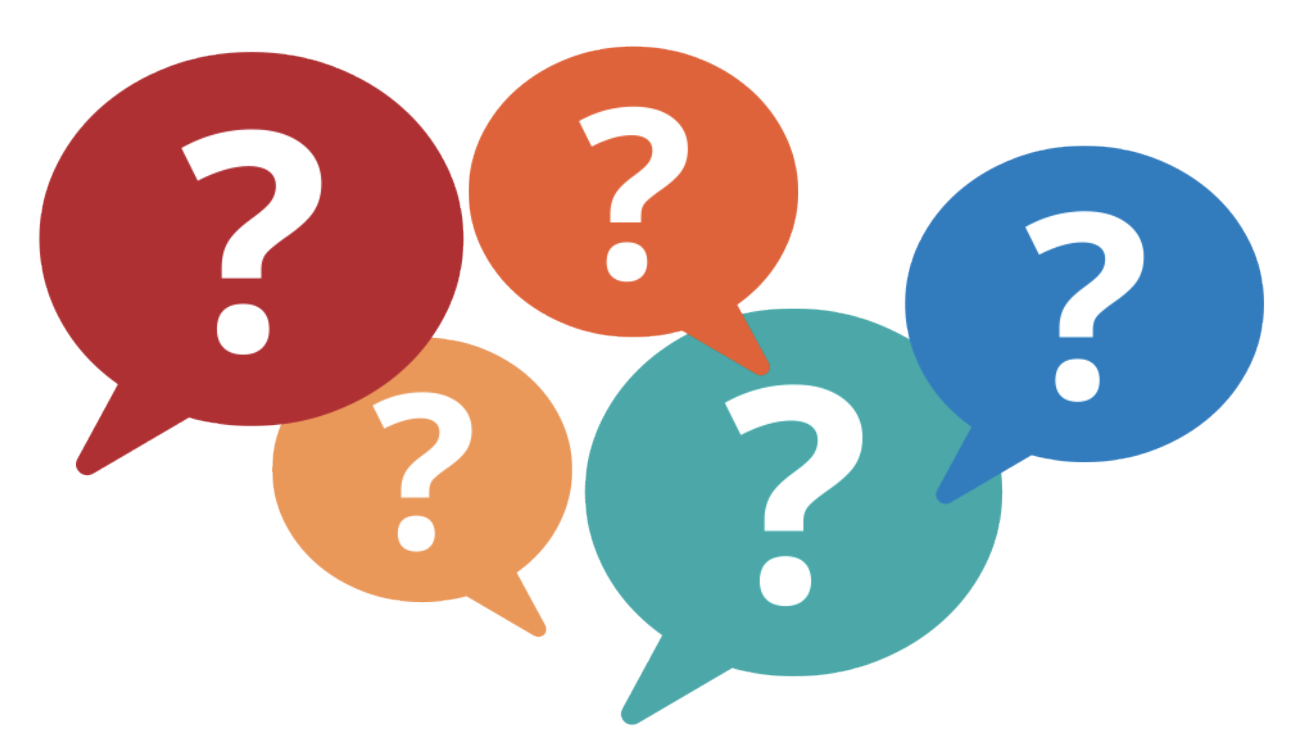(Also available in Pyret)
Students learn about Categorical and Numeric data, are introduced to Tables by way of the Animals Dataset, and consider what questions can and cannot be answered with available data.
Lesson Goals |
Students will be able to…
|
Student-facing Lesson Goals |
|
Materials |
|
Supplemental Materials |
|
Preparation |
|
- categorical data
-
data whose values are qualities that are not subject to the laws of arithmetic
- data
-
pieces of information about a group of individuals or things
- data science
-
the science of collecting, organizing, and drawing general conclusions from data, with the help of computers
- quantitative data
-
number values for which arithmetic makes sense
- sample
-
a set of individuals or objects collected or selected from a statistical population by a defined procedure
🔗Questions that Matter 20 minutes
Overview
Students look at opening questions, either at their desks or in a walk around the room. They select a question they are personally interested in, and think about the data required to answer that question. This process draws a direct line between answering questions they care about and the basics of data science.
Launch

-
Look at the provided list of Opening Questions, and take one minute to select a question that grabs your attention. Arrange yourselves into groups based on the question you like, making sure that each group has between 2-5 people.
-
Have each person in the group quickly share their gut reaction: What do you think the answer is?
-
After sharing initial reactions, have each person share their reasoning.
-
Does everyone in your group agree about the answers to their question?
Note: Students are VERY likely to try and explain their reasoning as soon as they give their gut answers. This can taint the answers of other students in the group - emphasize that this is about exposing our "gut reaction" or bias.
Investigate
What information would you collect to answer the question you selected? Take 5 minutes to think about what information you would need to collect, to find the answer.
Common Misconceptions
Students may lean towards questions about individuals, instead of questions about what’s true for a group of individuals who vary from one to another. For example, instead of wondering what movie gets the highest rating, they should ask what’s the typical rating for movies in a list, or how much those ratings tend to vary.
Synthesize
Data is any piece of information about a group of individual or things. In this classroom, we could collect data about student names, ages, favorite foods, and so on.
For each group…
-
What were your gut reactions?
-
Did the question wind up being too vague? What did you need to do to make it specific?
-
What data would you gather?
-
What, if anything, were you surprised about?
-
If we wanted to find out if small schools are better than big schools, for example, we might want to gather data on SAT scores, college acceptance, etc. Each of these is a variable in our dataset: any two schools we look at could vary by each of them.
-
We can’t survey every school in the world (or get data on every movie ever made, or every police action!) but we can analyze a sample of them, and try to infer something about all of them as a whole.
-
These questions quickly turn into a discussion about data — how you assess it, how you interpret the results, and what you can infer from those results.
The process of learning from data is called Data Science. Data science techniques are used by scientists, business people, politicians, sports analysts, and people from hundreds of other different fields to ask and answer questions about data.
Optional: Which Questions Can we Answer? Datasets are useful for answering questions, but they can’t answer all the questions that we will wonder about for a given topic. In this activity students will look at a small dataset about a cyclist’s training rides and think about how they could use the table to answer each question or why a question cannot be answered using the table. |
Which of you like to ride bikes? What data might you collect about bike rides? Open to What Questions Can You Answer with the Given Data? This page includes a small dataset about a cyclist’s training rides and a set of questions. The data can be used to answer some, but not all, of the questions. With your partner, read each question. If it can be answered with what we know, explain how you could use the table to answer it. If it can’t be answered using the table, explain why not. |
🔗Meet the Animals! 25 minutes
Overview
Students explore the Animals Dataset, sharing observations and familiarizing themselves with the idiosyncrasies and patterns in the data. In the process, they learn about Categorical and Quantitative data.
Notice and Wonder Pedagogy This pedagogy is a widely-used best practice in Math-Ed, and is used throughout this course. In the "Notice" phase, students are asked to crowd-source their observations. No observation is too small or too silly! Students may notice that the animals table has corners, or that it’s printed in black ink. But by listening to other students' observations, students may find themselves taking a closer look at the dataset to begin with. The "Wonder" phase involves students raising questions, but they must also explain the context for those questions. Sharon Hessney (moderator for the NYTimes excellent What’s Going On in This Graph? activity) sometimes calls this "what do you wonder…and why?". These phases should be done in groups or as a whole class, with ample time given to both Notice and Wonder. |
Launch
Open the Animals Spreadsheet in a browser tab, or turn to The Animals Dataset.
Investigate
 This table contains data from an animal shelter, listing animals that have been adopted. We’ll be analyzing this table as an example throughout the course, but you’ll be applying what you learn to a dataset you choose as well.
This table contains data from an animal shelter, listing animals that have been adopted. We’ll be analyzing this table as an example throughout the course, but you’ll be applying what you learn to a dataset you choose as well.
-
Turn to Questions and Column Descriptions. What do you Notice about this dataset? Write down your observations in the first column.
-
Sometimes, looking at data sparks questions. What do you Wonder about this dataset, and why? Write down your questions in the second column.
-
There’s a third column, called “Answered by Dataset” — circle "Yes" if your Wonder can be answered by the dataset or "No" if it can’t.
Have students share back their noticings (statements) and wonderings (questions), and write them on the board. Ask the class if each Wonder can be answered by the data, making sure that they have a few questions that can be answered, and a few that can’t. Also ask if some of their wonderings are about a group as a whole, rather than just individuals.
-
If you look at the bottom of the Animals Spreadsheet, you’ll see that this document contains multiple sheets. One is called
"pets"and the other is called"README". Which sheet are we looking at? -
Each sheet contains a table. For our purposes, we only care about the animals table on the
"pets"sheet.
Any two animals in our dataset may have different ages, weights, etc. Each of these is called a variable in the dataset. Data Scientists work with two broad kinds of data: Categorical Data and Quantitative Data. Sometimes it can be tricky to figure out if data is categorical or quantitative, because it depends on how that data is being used!
We use Categorical Data to answer “what kind?”, and Quantitative Data to answer "how much?".
Categorical Data is used to classify, not measure. The laws of arithmetic do not make sense when it comes to categorical data.
-
“Species” is a categorical variable, because we can ask questions like “which species does Mittens belong to?"
-
We couldn’t ask if “cat is more than lizard” and it doesn’t make sense to "find the average ZIP code” in a list of addresses, because ZIP codes identify locations, not amounts.
-
What are some other categorical variables you see in this table?
-
Name, Sex, and Fixed
-
Quantitative Data - sometimes referred to as Numeric Data - is used to measure an amount of something, or to compare two pieces of data to see how much less or more one is compared to the other.
-
"Pounds" is a quantitative variable, because we can talk about how much more one animal weighs more than another or ask what the average weight of animals in the shelter is.
-
If we want to ask “how much” or “which is most”, we’re talking about Quantitative Data.
-
What are some other quantitative variables in this table?
-
Age, Legs, Weight, and Time to Adoption
-
Complete Categorical or Quantitative?. Be sure to discuss your answers with your partner or group!
Synthesize
Data Science is all about making educated guesses about an entire group (called the population) based on data about a subset of that group (called the sample). It’s important to remember that tables are only a sample of a larger population: this table describes some animals, but obviously it isn’t every animal in the world! Still, if we took the average age of the animals from this particular shelter, it might tell us something about the average age of animals from other shelters.
These materials were developed partly through support of the National Science Foundation, (awards 1042210, 1535276, 1648684, 1738598, 2031479, and 1501927).  Bootstrap by the Bootstrap Community is licensed under a Creative Commons 4.0 Unported License. This license does not grant permission to run training or professional development. Offering training or professional development with materials substantially derived from Bootstrap must be approved in writing by a Bootstrap Director. Permissions beyond the scope of this license, such as to run training, may be available by contacting contact@BootstrapWorld.org.
Bootstrap by the Bootstrap Community is licensed under a Creative Commons 4.0 Unported License. This license does not grant permission to run training or professional development. Offering training or professional development with materials substantially derived from Bootstrap must be approved in writing by a Bootstrap Director. Permissions beyond the scope of this license, such as to run training, may be available by contacting contact@BootstrapWorld.org.
